Search Images
Browse Content (p. 1137)
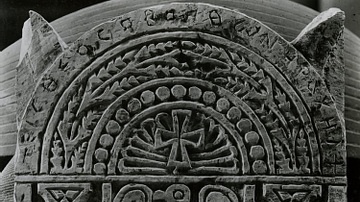
Image
Byzantine Funerary Stela
Found in Egypt, this limestone funerary stela, dating to 6th or 7th century CE, depicting a cross above a dove. The Greek inscription reads, "Single God, helping Rachel". Measures 57.4 cm in height, 42.5 cm in width.
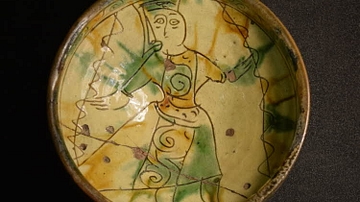
Image
Byzantine Bowl with Female Figure
This bowl, dating to the 14th-15th century CE, features a stylized figure of a woman. It is glazed on the inside, and partially on the outside. Made in Cyprus. Discovered in Cyprus. Measures 6.4 cm in height and 16.3 cm in diameter. (British...
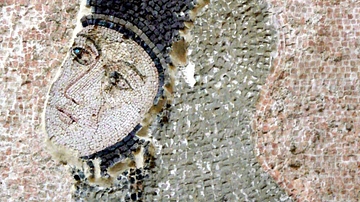
Image
Maria Palaiologina
This detail from a mosaic at Chora Church, Istanbul, depicts Maria Palaiologina. Also known as Mary of the Mongols, she was an illegitimate daughter of Michael VIII Palaiologos (reigned 1258-1282 CE). She married Abaqa Khan, and was highly...
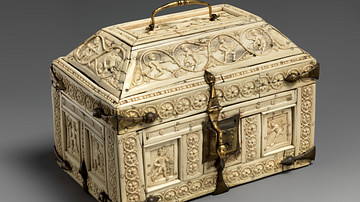
Image
Byzantine Ivory Casket
Made in Constantinople in the 11th century CE, this casket is made of ivory and bone, and has gilded copper mounts. Depicted are dancers waging mock battles and taming a panther. (Metropolitan Museum of Art, New York)
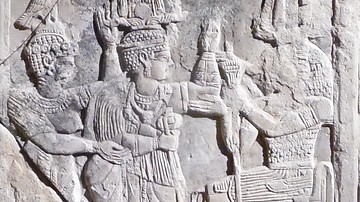
Image
Candace Amanishakheto of Meroe
Sandstone stele showing the Candace (or queen) Amanishakheto of Meroe (r. c. 10 BCE–1 CE), from the Kingdom of Kush in what is now Sudan. She is here depicted between the goddess Amesemi and the god Apedemak. Dating from the 1st century BCE...
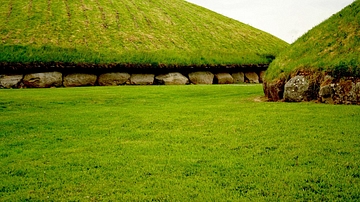
Image
Neolithic Mounds at Knowth
Knowth near Slane, County Meath, Ireland
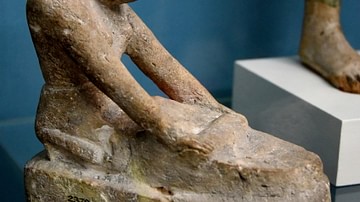
Image
Egyptian Grinding Grain
This limestone statuette depicts a servant grinding grain on what appears to be a quern. Figurines and statuettes were placed insides tombs as early as the 1st Dynasty (3100-2890 BCE). The majority of them are doing bakery, brewery, butchery...
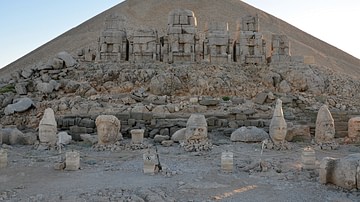
Image
Eastern Terrace of Mount Nemrut
Overview of the thrones and the heads of the gods on the eastern terrace of Mount Nemrut. From left to right: King Antiochus I, Commagene-Fortuna, Zeus-Oromasdes, Apollo-Mithras and Hercules. Mount Nemrut (Turkish: Nemrut Dağı) is one of...
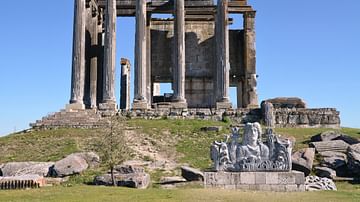
Image
Zeus Temple in Aizanoi
The Temple of Zeus in the Phrygian city of Aizanoi (modern-day Turkey) is one of the best-preserved Roman temples. Its construction started in 92 CE and continued during the reign of Hadrian in the 2nd century CE. The temple is pseudodipteral...
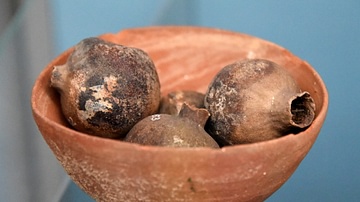
Image
Pomegranates in a Bowl
These are vegetal remains and were food offerings from tombs. New Kingdom, 1550-1070 BCE. From Egypt, precise provenance of excavation is unknown. (The British Museum, London).